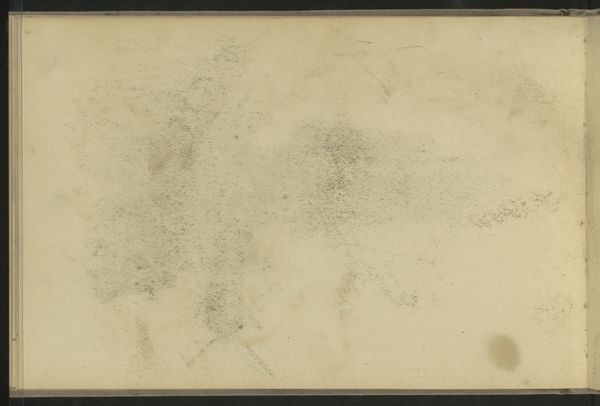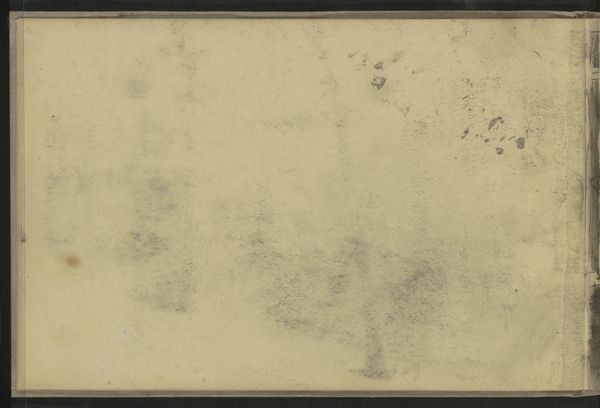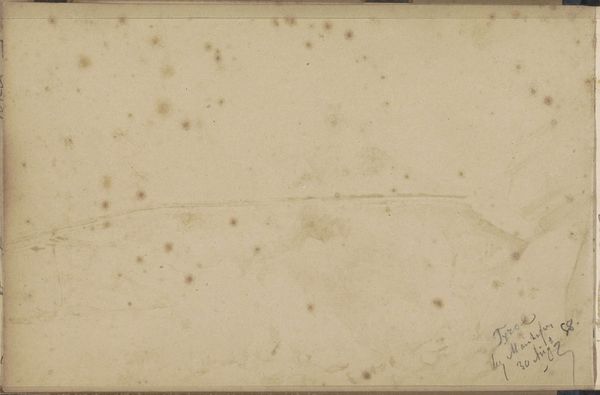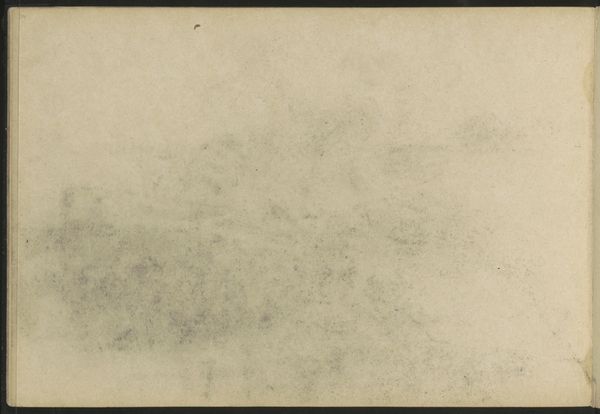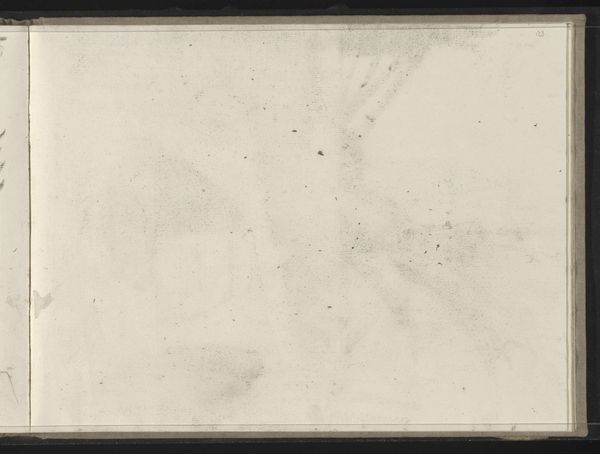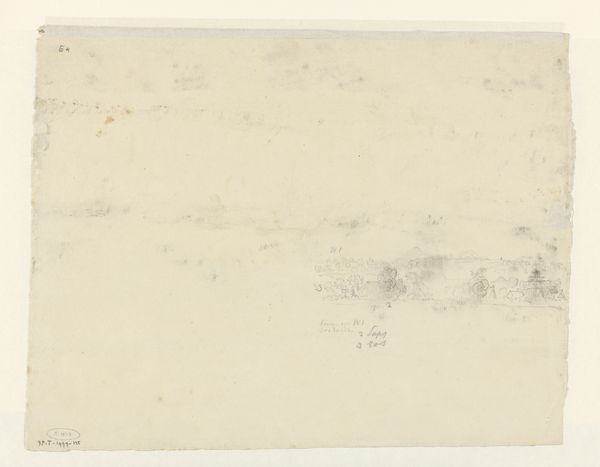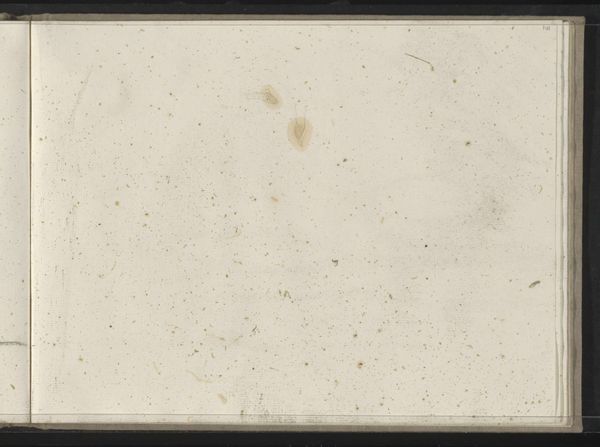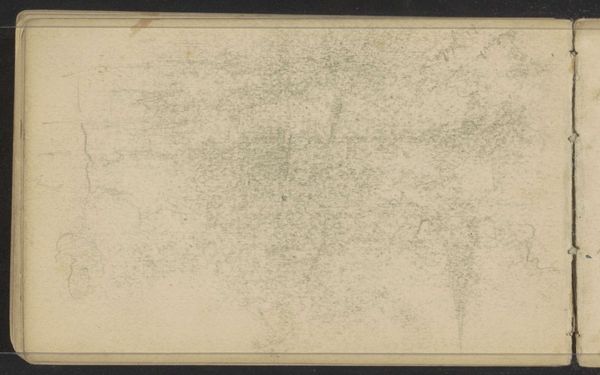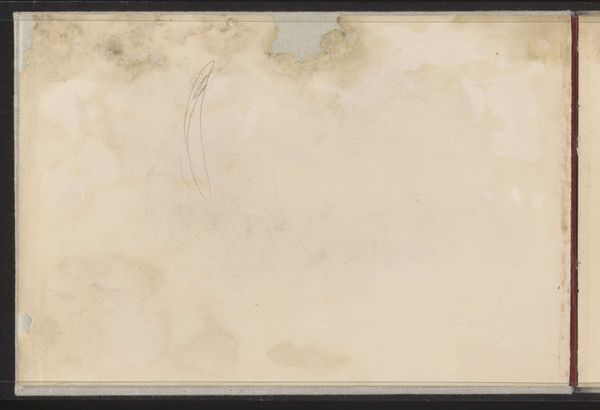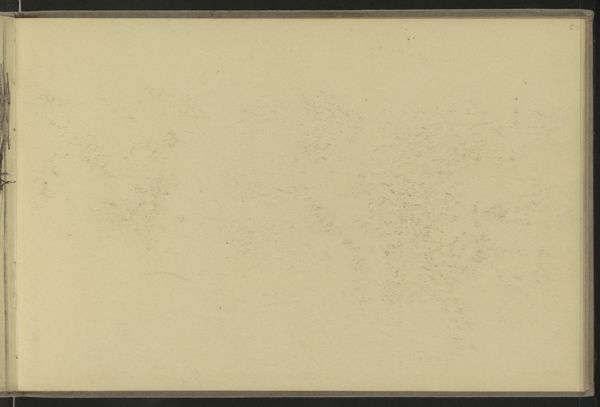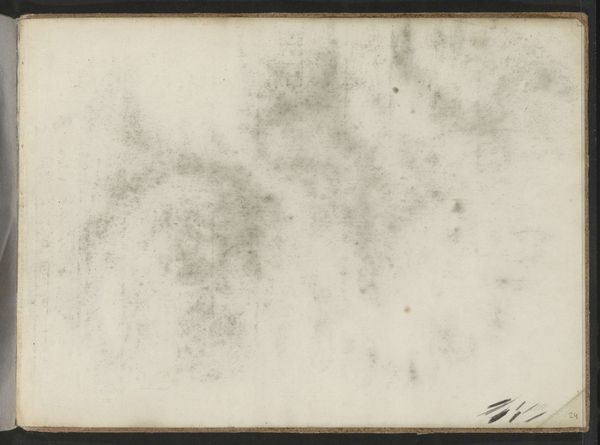
Copyright: Rijks Museum: Open Domain
Curator: Today, we are looking at "Notitie," a landscape drawing by Willem Bastiaan Tholen. Created between 1870 and 1931, it's rendered in coloured pencil on paper and held here at the Rijksmuseum. Editor: It’s interesting how little there is, yet I feel a palpable mood of quietude and subtle loneliness. The lack of bold color, almost monochromatic in its paleness, emphasizes a sort of desolation that, I imagine, resonated with certain rural populations, marginalized even within already struggling areas. Curator: Indeed, it’s a work of nuanced observation. Tholen employs delicate, impressionistic strokes. The landscape itself might at first seem unremarkable but the way Tholen uses such minimal marks gestures towards an intimate and complex relationship to the depicted location, imbuing the everyday with significance. Editor: I wonder about the historical context – Tholen creating this during a time of significant societal shift. We see industry disrupting rural life and older ways of knowing and making, an erosion that, no doubt, carried heavy implications for workers and families displaced by economic pressure and changing labor demands. There is nothing grand here, no heroic symbolism; there is a certain melancholic tone, suggesting, for me at least, an empathy for the forgotten or overlooked. Curator: Yes. And despite the seeming simplicity, the symbolism here lies in what isn't explicitly stated. Tholen avoids grand statements, yet by using the intimate and delicate nature of the colored pencil, he highlights a subjective interpretation of the ordinary—an evocative trace that mirrors memory and perception. We can almost feel the coolness in the muted colors, echoing the ephemeral quality of existence itself. Editor: I find myself questioning the privilege embedded within representations of the marginalized. Does rendering such subjects through art humanize or further aestheticize their struggle, potentially distancing viewers from the tangible realities they face? Perhaps this image opens a dialogue about how the past can—and must—inform our present. Curator: Absolutely. It seems we find ourselves, in our interpretations, bridging the personal with broader, historically contextualised inquiries about human experience itself. Editor: Precisely, finding ourselves and seeing history in those small, colored strokes.
Comments
No comments
Be the first to comment and join the conversation on the ultimate creative platform.
